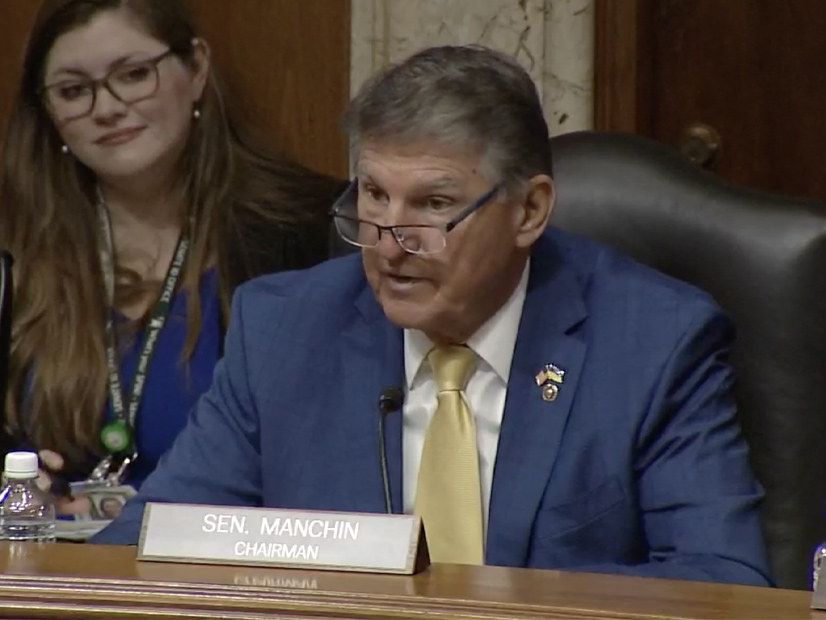
The Senate Energy and Natural Resources Committee on Thursday looked into the state of advanced nuclear reactors just weeks after NuScale Power and Utah Associated Municipal Power Systems terminated a once promising pilot project. (See Pioneering NuScale Small Modular Reactor Project Canceled.)
Both the Infrastructure Investment and Jobs Act and the Inflation Reduction Act gave billions of dollars to the sector for demonstration projects and commercialization incentives, said committee Chair Joe Manchin (D-W.Va.).
“Despite all of the federal and private sector support, we’re witnessing struggles and hesitancy in getting advanced nuclear projects off the ground,” Manchin said. “There are large design, cost and regulatory uncertainties associated with first-of-a-kind nuclear technology — which is why we’ve now created numerous federal programs to help reduce these risks. But someone will need to go first, and unfortunately many of the utilities I’ve spoken with won’t get in the game until others have done it first.”
The recently canceled Carbon Free Power Project was going to be constructed at the Idaho National Laboratory by NuScale, featuring 60- to 77-MW modules that could be scaled up as the municipal power agency’s needs grew, said lab Director John Wagner.
The project got $771 million in funding from the federal government that taxpayers will not get back, as it was picked for the grant in a noncompetitive process, unlike other advanced nuclear pilots by TerraPower and X-energy, Manchin said.
“I can’t speak to the procurement process, and so on and so forth,” Wagner said. “I can speak to … a lot was accomplished with that project, despite the fact that it was ultimately decided to be terminated. A design certification for an advanced small light water reactor was accomplished; experience with the licensing process; experience with developing the supply chain.”
While the project offered a chance to test out the regulatory process, in his written testimony Wagner said the industry has to end the “era of constructing paper reactors.”
“The Carbon Free Power Project was suspended because of economics,” Wagner wrote. “A lack of subscriptions was directly related to the cost issues surrounding deployment of first-of-its-kind technologies.”
The Department of Energy’s “commercial liftoff” report for advanced nuclear gave several recommendations to enable a “committed orderbook,” said Wagner: cost overrun insurance, tiered grant financial assistance, government ownership, and government-enabled off-take certainty. (See DOE Reports Highlight 3 Technologies to Decarbonize US Economy.)
Utility executives have indicated they do not want to go first on developing new nuclear technology, especially given Southern Co.’s experience with the Vogtle plant and its massive cost overruns, said Manchin. He asked the witnesses how to overcome that resistance.
The next reactors will benefit from the investment and production tax credits from recent legislation, but that is not enough to get the first reactor built, said Jeffrey Merrifield, a former Nuclear Regulatory Commissioner and chair of the U.S. Nuclear Industry Council’s Advanced Nuclear Working Group.
“That’s where I think there needs to be a backstop program,” Merrifield said. “So that if there are timing delays [or] cost overruns, there can be a sharing of that cost and not burden that single company, whether it’s a utility or an industrial user, for putting their neck out and trying to move forward with the technology.”
Utilities are not the only private companies looking into advanced nuclear, with Dow Vice President for Energy and Climate Edward Stones saying his firm is interested in using small modular reactors to replace the combined heat and power systems it uses at its factories. The firm has to produce 10 GW of electricity, heat and steam for its 25 major manufacturing sites around the globe.
Dow is working with X-energy to build four SMRs at its Seadrift facility in Texas, with plans to start construction in 2026 and be operational by 2030.
“The project will provide the Seadrift site with safe, reliable, zero-carbon-emissions power and steam as the existing energy and steam assets reach their end of life,” Stones said. “The project is expected to reduce the site’s emissions by 440,000 MT CO2e/year.”

